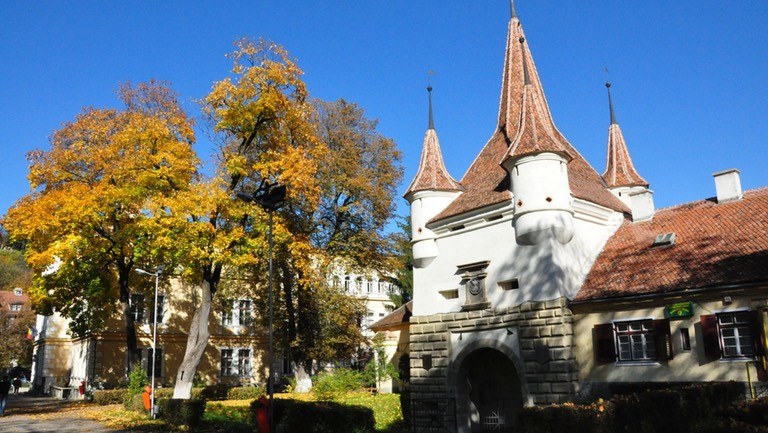The Council House
The building that houses the History Museum has been known as “the council House” ever since 1420, when it was designed. It is the place where meetings, public trials and theatre performances used to be held. The main tower (1525-1528) 58 m high, used as a watchtower, is surrounded by four smaller towers with a sphere on top of each, symbolizing the right of the town judges to pass the capital sentence. Over the centuries, important decision were taken in the Council House, regarding crucial events for Brașov, Tara Bârsei and even for whole of Transilvania.
The council board of the town moved from this building in 1876. Close to the tower is the marketplace, structured according to the specific products that were marketed here: the wheat market, the flax market, the flower market, the coopers’ place etc. In 1523 a watch was placed on top of the tower and in 1774 the coat of arms was installed.
Art Museum
Designed in new-Baroque style, the establishment that houses the Art Museum was built in 1902. Exhibits of famous Romanian painters, such as Nicolae Grigorescu, Ștefan Luchian, Gh. Petrascu, Nicolae Tonitza and Theodor Pallady as well as works belonging to local artists of all generations can be admired here.
Sforii street
Sforii Street is the narrowest street in town and one of the narrowest in Europe – 1.32 wide, 83 m long – and demonstrates the tendencies of urbanization in medieval Brasov. At first, it was destined to link Porții and Cerbului streets, being a necessary passage way for the firemen.
The Ecaterina Gate
The Ecaterina Gate is one of the oldest gates to retain the original appearance. For several centuries it was the only gate on the west side of the fortress-city. The inscriptions on the gate also mention the year 1540. A document of 1552 mentions the existence of a gun powder and missiles depot. The tower of the Ecaterina Gate was square-shaped, with small watch tower at each angle and was fitted with an opening bridge to afford crossing the water ditch. Following the opening of the gateway to Scheii Brasovului, the Ecaterina Gatewas walled up and turned into a storehouse. A fragment of the ancient wall of the city is still visible near Ecaterina Gate.
The Șchei Gate
The Șchei Gate was erected between 1827-1828 with a view to facilitate the communication between the inhabitants of Șcheii Brașovului and those living the city walls. It stands very close to the Ecaterina Gate and is made of stone and bricks, in classical style, resembling a triumphal arch.
We are waiting for you in Brașov, in one of the locations of Ambient Complex to discover the attractions offered by this beautiful city in Transylvania.

